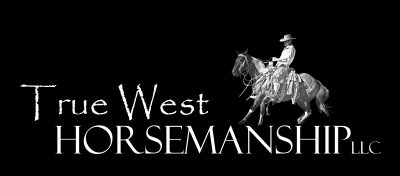Purpose vs Progress
Why do those without a job to do with their horses often take too long to make progress and those having a job to do with their horses often rush the progress instead of taking the necessary time? I commonly see these two extremes in my work with horses and their owners. As with most things, it’s important to recognize the tendencies and try to find a balance.
There is a tension between these ideas of purpose and progress. Without a specific task or actual job to do, many well-meaning owners take inordinate amounts of time to make progress with their horse – be it starting a colt under saddle, getting one confident going down the trail with or without other horses, teaching one to rope, etc. This is when the excellent principle of “taking the time it takes” gets taken too far!
When this happens, a plateau can be hit that for many horses can involve frustration or boredom, being asked to repeat the same things over and over again, for no practical reason. Even more common are those who will simply get what I call “mechanized” – where they will go through the motions and be “obedient” but are lacking understanding when it comes to applying things practically. At the same time, the owners can get quite stuck and frustrated, too. Many times it may be a result of a lack of time or consistency and they are constantly having to start over in review because it’s been so long since their last session. Alternatively, fear or ignorance are often factors that hold people back from pushing forward, either being scared of the unknown or not actually knowing how to make progress.
The majority of horse owners today do not use their horses for practical work, though many participate in competitive events and this can have the same resulting pressure due to the human’s focus on their goals or tasks. When we don’t have a practical task at hand, it can require a certain amount of creativity to approach a progression of skills or abilities while avoiding the aforementioned plateau. Learning to use variety in the setting (i.e. poles, tarp, balls, bridges, etc.) or terrain (work in different locations: along the driveway, on the side of a hill, in a ravine, etc.) is often a simple way to add interest, focus and meaning, as well as the opportunity to work on advancing levels of acceptance in your horse.
Don’t get me wrong: it is always a good idea to break things down into smaller steps and take the time it takes. But for those of us who can identify with being overly cautious or tentative, or perhaps are just unsure of how to make steady progress towards our goal, then we need to recognize when we might be “beating a dead horse”, as they say.
On the other hand, there are those of us who gladly jump in the deep end, figure it out as we go and, many times, blame the horse if things go wrong. Perhaps we allow the pressure of getting the job done to compromise our horsemanship and thus our horse’s progress – possibly even their foundational trust in us as their leader. There are many ways to force a horse into doing things they aren’t ready for and just getting the job done, but this will always result in a partnership that’s not based in trust and understanding and, as such, can have elements of danger and risk that is not necessary, to say nothing of the questionable ethics. This could also involve not only practical setbacks, but often economical as well.
Part of what I’m trying to say can be summed up well by Antoine de Pluvinel who said, “You can never rely on a horse that is educated by fear. There will always be something that he fears more than you. But, when he trusts you, he will ask you, what to do when he is afraid.”
To sum it up, we need to approach our horse’s education (and our own!) in a step-by-step fashion, avoiding plateaus and aiming for steady progress that will be guided by their individual temperament and ability. If you find yourself stuck in one of the two extremes, I encourage you to have a look at my Online Video Library for instruction and inspiration at www.truewesthorsemanship.com
Keep a leg on each side and your mind in the middle. Catch ya down the road!

